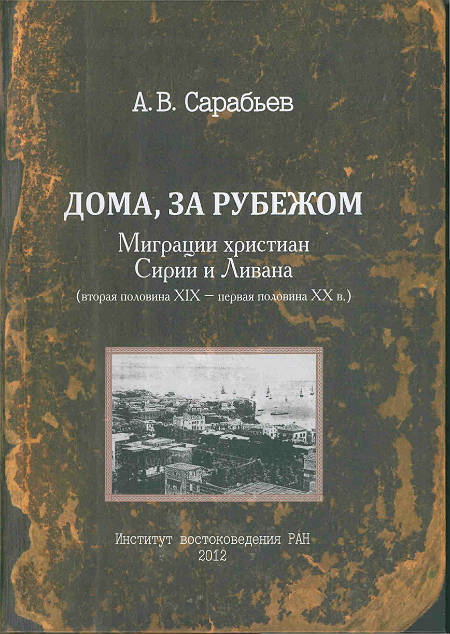Книга
 Дома, за рубежом. Миграции христиан Сирии и Ливана (вторая половина XIX - первая половина XX вв.)
Дома, за рубежом. Миграции христиан Сирии и Ливана (вторая половина XIX - первая половина XX вв.)

Сарабьев Алексей Викторович
Ответственный редактор: Наумкин Виталий Вячеславович
Москва, 2012, 324 стр.
Феномен сиро-ливанской эмиграции, значительно повлиявший на все сферы жизни сирийского и ливанского обществ и оказавший воздействие на принимающие страны, рассмотрен в тесной связи с другими составляющими миграционного процесса – внутренними миграциями, иммиграцией и реэмиграций. Тема освещается в контексте социально-экономического и политического развития региона и ограничивается анализом миграций представителей различных христианских конфессий на территориях современных Сирии и Ливана.
English version
The author of this book, applying new developments in migration theory, examines external migration (emigration, immigration and re-emigration) as well as internal migration (the internal displacement of Arab Christians and the passage of Christian refugees from Asia Minor through the Syrian and Lebanese territories). The evolution and dynamics of each type of migration are studied in the context of changes in socio-political conditions. The researcher shows the factors affecting Christian migration and the changes in these factors during the given period in the context of regional and global historical processes (socio-cultural development of the religious communities, local and regional conflicts, world wars, economic crises, the clash of interests between major powers in the region, the movement for independence and the political struggle in Syria and Lebanon, etc.). The author demonstrates a strong correlation between these socio-political processes and the migration of Syrians and Lebanese in the given period. Escalations in social tensions, interfaith issues and political obstacles causes a spike in both internal and external migration. The relocation of the Christian population inside the territories of Syria and Lebanon and the exodus of a large number of emigrants abroad in turn gave rise to changes in social and confessional structures and altered the Christian presence among the business and political elite in both countries. The author traces these transformations in the nature of migration through a number of indicators. He brings to light both the positive and negative effects of migration on the situation in Syria and Lebanon, in particular, the shift in the confessional balance in Syrian and Lebanese societies and the outflow of the most active members of the Christian communities, which significantly weakened them, especially in the context of a general growth in the region’s Muslim communities.




